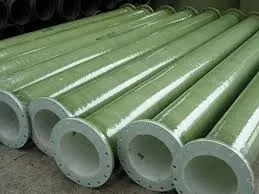
-
 Afrikaans
Afrikaans -
 Albanian
Albanian -
 Amharic
Amharic -
 Arabic
Arabic -
 Armenian
Armenian -
 Azerbaijani
Azerbaijani -
 Basque
Basque -
 Belarusian
Belarusian -
 Bengali
Bengali -
 Bosnian
Bosnian -
 Bulgarian
Bulgarian -
 Catalan
Catalan -
 Cebuano
Cebuano -
 China
China -
 China (Taiwan)
China (Taiwan) -
 Corsican
Corsican -
 Croatian
Croatian -
 Czech
Czech -
 Danish
Danish -
 Dutch
Dutch -
 English
English -
 Esperanto
Esperanto -
 Estonian
Estonian -
 Finnish
Finnish -
 French
French -
 Frisian
Frisian -
 Galician
Galician -
 Georgian
Georgian -
 German
German -
 Greek
Greek -
 Gujarati
Gujarati -
 Haitian Creole
Haitian Creole -
 hausa
hausa -
 hawaiian
hawaiian -
 Hebrew
Hebrew -
 Hindi
Hindi -
 Miao
Miao -
 Hungarian
Hungarian -
 Icelandic
Icelandic -
 igbo
igbo -
 Indonesian
Indonesian -
 irish
irish -
 Italian
Italian -
 Japanese
Japanese -
 Javanese
Javanese -
 Kannada
Kannada -
 kazakh
kazakh -
 Khmer
Khmer -
 Rwandese
Rwandese -
 Korean
Korean -
 Kurdish
Kurdish -
 Kyrgyz
Kyrgyz -
 Lao
Lao -
 Latin
Latin -
 Latvian
Latvian -
 Lithuanian
Lithuanian -
 Luxembourgish
Luxembourgish -
 Macedonian
Macedonian -
 Malgashi
Malgashi -
 Malay
Malay -
 Malayalam
Malayalam -
 Maltese
Maltese -
 Maori
Maori -
 Marathi
Marathi -
 Mongolian
Mongolian -
 Myanmar
Myanmar -
 Nepali
Nepali -
 Norwegian
Norwegian -
 Norwegian
Norwegian -
 Occitan
Occitan -
 Pashto
Pashto -
 Persian
Persian -
 Polish
Polish -
 Portuguese
Portuguese -
 Punjabi
Punjabi -
 Romanian
Romanian -
 Russian
Russian -
 Samoan
Samoan -
 Scottish Gaelic
Scottish Gaelic -
 Serbian
Serbian -
 Sesotho
Sesotho -
 Shona
Shona -
 Sindhi
Sindhi -
 Sinhala
Sinhala -
 Slovak
Slovak -
 Slovenian
Slovenian -
 Somali
Somali -
 Spanish
Spanish -
 Sundanese
Sundanese -
 Swahili
Swahili -
 Swedish
Swedish -
 Tagalog
Tagalog -
 Tajik
Tajik -
 Tamil
Tamil -
 Tatar
Tatar -
 Telugu
Telugu -
 Thai
Thai -
 Turkish
Turkish -
 Turkmen
Turkmen -
 Ukrainian
Ukrainian -
 Urdu
Urdu -
 Uighur
Uighur -
 Uzbek
Uzbek -
 Vietnamese
Vietnamese -
 Welsh
Welsh -
 Bantu
Bantu -
 Yiddish
Yiddish -
 Yoruba
Yoruba -
 Zulu
Zulu
frp desalination piping and fitting
FRP Desalination Piping and Fitting A Sustainable Solution for Water Scarcity
In the face of escalating global water scarcity, desalination has emerged as a crucial technology for producing fresh water from seawater. As the demand for freshwater continues to rise, the importance of effective and durable materials in desalination processes becomes paramount. One such material that is increasingly gaining recognition is Fiberglass Reinforced Plastic (FRP). This article explores the merits and applications of FRP in desalination piping and fittings, highlighting its benefits for sustainable water management.
FRP Desalination Piping and Fitting A Sustainable Solution for Water Scarcity
Another significant advantage of FRP is its lightweight nature. Compared to steel, FRP pipes and fittings are much lighter, which simplifies installation and reduces the overall structural load on support systems. This characteristic is particularly beneficial in offshore desalination plants or in locations where access to heavy machinery is limited. The ease of transportation and handling of FRP contributes to a more efficient installation process, allowing projects to be completed faster while minimizing labor costs.
frp desalination piping and fitting

Furthermore, FRP offers excellent thermal insulation properties, which can be critical in the energy-intensive desalination process. By minimizing heat loss, FRP helps to enhance the overall energy efficiency of desalination plants. This factor is especially crucial in membrane-based desalination technologies, such as reverse osmosis, where maintaining optimal operating temperatures can significantly affect performance and energy consumption.
In addition to its physical properties, FRP can be tailored to meet specific operational requirements. Manufacturers can engineer FRP pipes and fittings with varying thicknesses, diameters, and chemical compositions, allowing for customized solutions that cater to different desalination technologies and site conditions. This versatility ensures that desalination facilities can utilize optimal materials to meet their unique challenges effectively.
Moreover, using FRP in desalination systems contributes to sustainability efforts by promoting the use of materials that have a lower environmental impact. While the production of FRP does involve some environmental costs, its durability and efficiency can result in lower overall resource consumption and waste generation over the system's lifecycle.
In conclusion, FRP piping and fittings are revolutionizing desalination processes by providing a sustainable, durable, and efficient alternative to traditional materials. As the world continues to grapple with water scarcity, incorporating advanced materials like FRP into desalination technology is essential for developing resilient water resources. With its corrosion resistance, lightweight design, energy efficiency, and customization potential, FRP stands out as a vital component in the quest for sustainable solutions to global water challenges. Investing in FRP technology for desalination is not only a strategic choice for plant operators but also a necessary step towards ensuring freshwater availability for future generations.









